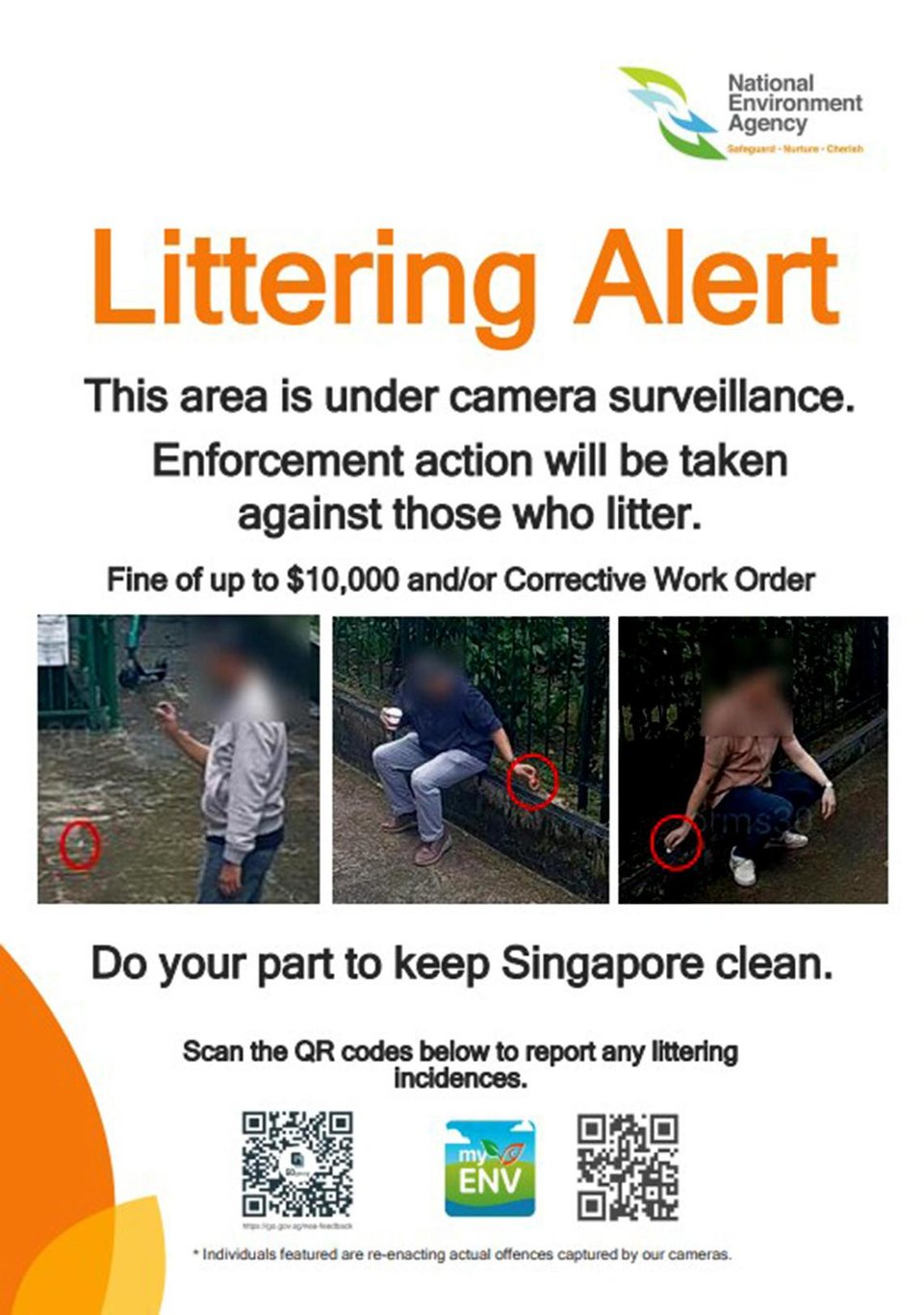August 28, 2025
SINGAPORE – Four recalcitrant litterbugs were identified in July by their neighbours in Chinatown after photographs of the individuals were put up in community spaces there.
This was only the second time offenders had been identified in this way, after posters were first used in 2024 for a repeat offender at Vista Point in Woodlands.
Investigations into the Chinatown cases are ongoing.
This was shared by the National Environment Agency (NEA) on Aug 27 during a media briefing on public cleanliness initiatives, including one called Cleaner Neighbourhood that strengthens community involvement.
NEA said community engagement will be combined with traditional enforcement actions and technologies, such as the surveillance system, which has been expanded to conduct up to 2,500 camera deployments a year.
“The cameras will be equipped with video analytics for remote enforcement, intelligence gathering, and efficient deployment of officers,” the agency added.
NEA is also working with the community to identify egregious offenders.

A sample poster with pictures of litterbugs. PHOTO: NEA/THE STRAITS TIMES
In the first half of 2025, it issued about 800 enforcement tickets at cleanliness hot spots, of which about 240 were for littering offences. The remaining offences included smoking, vaping, and public urination and defecation.
Over a nine-month period, the litter count at cleanliness hot spots fell by 45 per cent, according to NEA.
As part of its punishment of recalcitrant offenders, the agency conducted 30 sessions of Corrective Work Order (CWO) in the first half of 2025 at cleanliness hot spots. The CWO sessions, in which litterbugs pick up litter from the streets, also aim to act as greater deterrence against littering.
NEA currently monitors 12 cleanliness hot spots, but it did not reveal where these locations are.
Causeway Point, Chinatown Complex, Jurong Point and Vista Point are places that have exited the cleanliness hot spot list. A 50 per cent reduction of litter is required for an area to exit the list.
Cleaner Neighbourhood was rolled out in early 2025 to boost the cleanliness of public spaces, such as by tackling rodent infestation and high-rise littering.
It was announced in March by Mr Baey Yam Keng, then Senior Parliamentary Secretary for Sustainability and the Environment, during the Budget debate. He said then that the initiative will “tackle hot spots with cleanliness, refuse management and congregation problems”.
NEA also announced on Aug 27 that it will adopt smarter technology and solutions to enhance its cleaning operations.
For instance, it is testing the use of artificial intelligence (AI) to improve the effectiveness and efficiency of ground cleaning operations. Officers no longer have to conduct audits through manual ground inspections. Instead, they are able to drive along designated routes and get AI to analyse the footage to identify any defects or lapses.
Rodent infestations

In 2025, there has been an increase in the number of rat burrows recorded, despite ongoing efforts to mitigate rat infestations. PHOTO: THE STRAITS TIMES
In 2025, there has been an increase in the number of rat burrows recorded, despite ongoing efforts to mitigate rat infestations.
During each surveillance cycle in the first half of 2025, an average of about 5,400 rat burrows were recorded by NEA, similar to the figure recorded in the same period in 2023, but a significant increase from the 2,800 rat burrows per cycle recorded in the same period in 2024.
There has also been an increase in enforcement actions taken jointly by NEA and the Singapore Food Agency against premises owners for rat-related lapses. In the first half of 2025, 480 enforcement actions were taken – an increase from the 380 enforcement actions taken in the same period in the previous year.
Poor refuse management, which accounted for 210 of the 480 enforcement cases, and poor housekeeping practices are key contributors to the propagation of rats because they provide food sources and harbour to rats, NEA said.
NEA is monitoring areas with high trade activities and inadequate refuse management practices, and is working with those involved to educate and enforce proper housekeeping and refuse management behaviours.
Ang Mo Kio Central was identified in May 2025 as one such location. Through collaboration and engagement with stakeholders such as town councils, grassroots advisers and owners of trade premises, NEA noticed that refuse management lapses in the area decreased by 60 per cent over a period of four months.
High-rise littering

NEA also announced on Aug 27 that it will adopt smarter technology and solutions to enhance its cleaning operations. PHOTO: THE STRAITS TIMES
While the number of high-rise littering complaints has remained relatively stable since 2022 – averaging about 28,000 cases annually – NEA continues to monitor the problem closely.
In 2024, about 2,100 cameras were deployed and about 500 enforcement actions were taken against high-rise littering. These cameras are equipped with video analytics technology. Since August 2025, NEA has extended its maximum camera surveillance duration from 14 days to 28 days.

